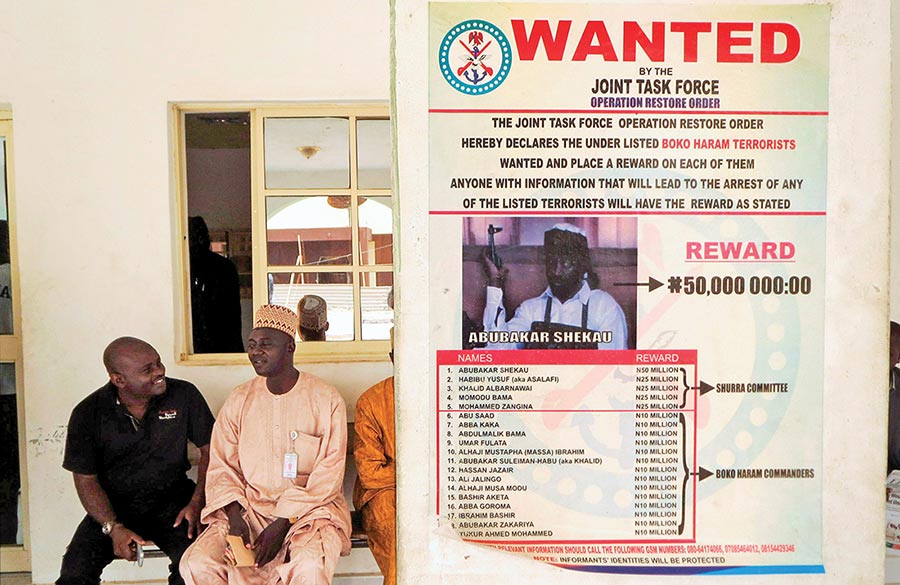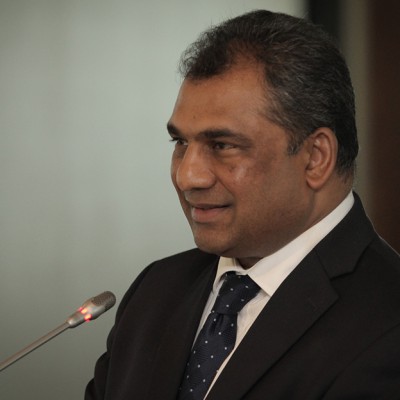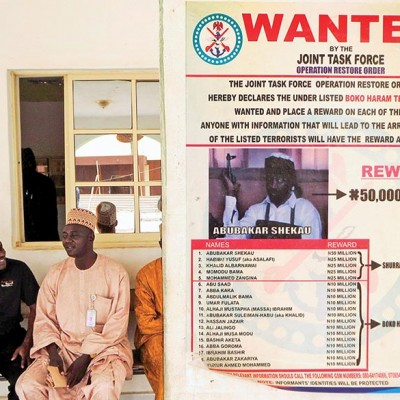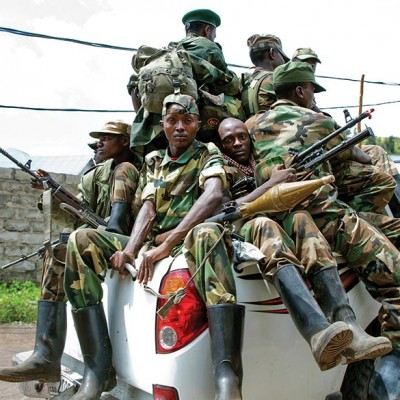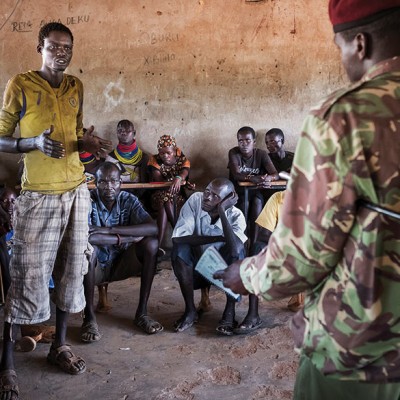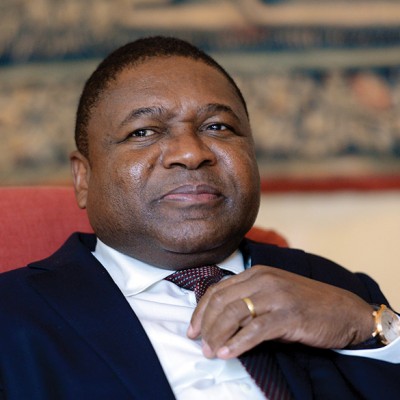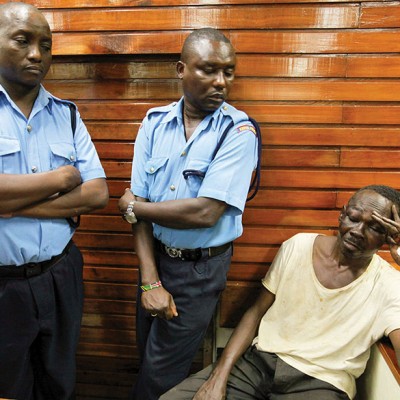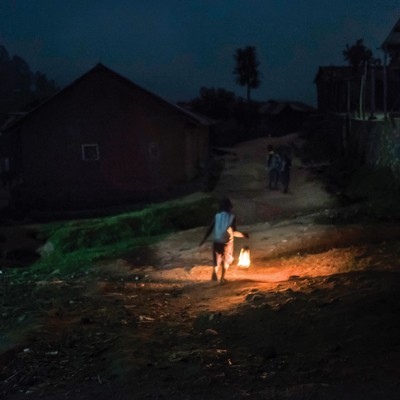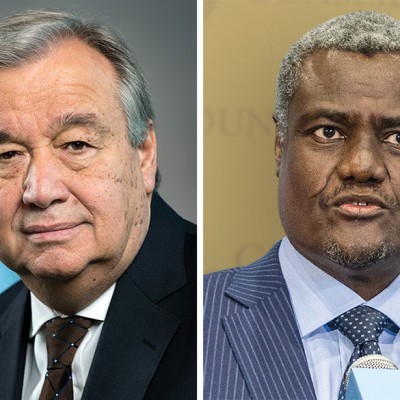This article analyses the humanitarian crisis in north-eastern Nigeria and explores practical steps that the affected communities and humanitarian agencies in the region can take to facilitate relief, repatriation and reconstruction efforts. A brief description of the regional and political context is first provided as background information for the discussion that follows.
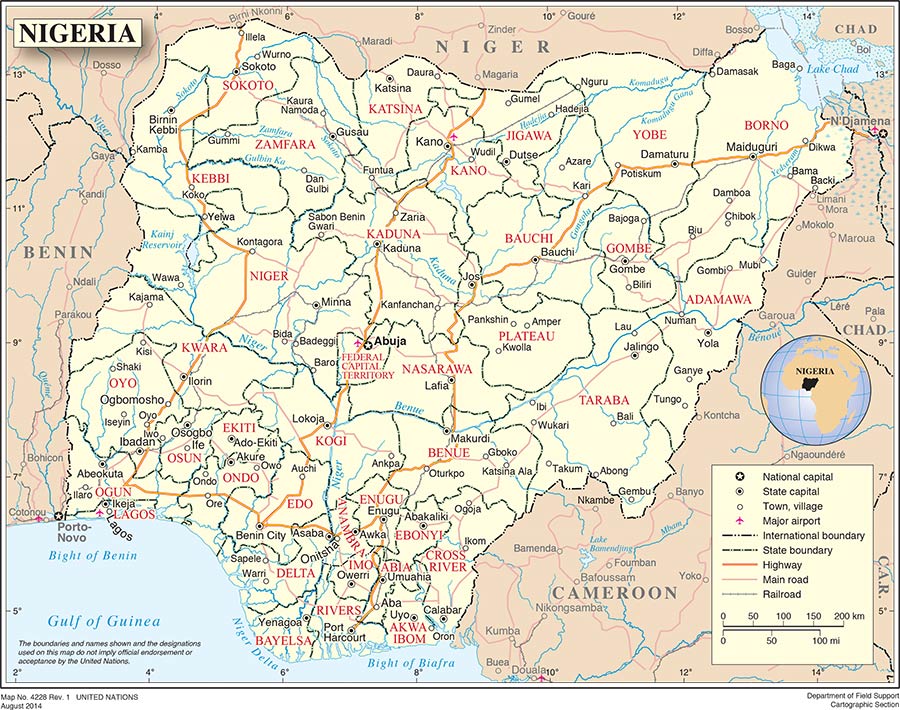
The Context and Purpose of the Inquiry
At the point of its founding in the early 2000s, Boko Haram – which means “Western education is prohibited” in Hausa – was an Islamic group committed to fighting unjust and corrupt political rule and establishing an Islamic state in northern Nigeria under Sharia (Islamic) law. Its official Arabic name, Jama’tu Ahlis Sunna Lidda’awati wal-Jihad, means “People Committed to the Propagation of the Prophet’s Teachings and Jihad.” Under the leadership of its founder Mohammed Yusuf, his associates at the Al-Haji Muhammadu Ndimi Mosque in Maiduguri (the capital of Borno State) organised themselves into a powerful Islamic movement. Boko Haram soon established its strongholds in Borno and Yobe states and expanded its decentralised network of followers in Bauchi, Kano and other northern states.
A critical turning point for Boko Haram’s popular movement came in the summer of 2009, when violent clashes broke out between Boko Haram and the military in Maiduguri against the backdrop of the government’s deepening resolve to curb Boko Haram’s influence. During the course of the escalating conflict, Boko Haram systematically attacked police headquarters, stations and officers. The military retaliated and hundreds of people were killed – mostly Boko Haram members – and Yusuf and other leaders of the group were captured. The police summarily executed Yusuf at their headquarters in Maiduguri, making him a martyr and a cause of Boko Haram’s long-standing insurgency campaign. Abubakar Shekau, the group’s second-in-command, succeeded Yusuf and, since 2010, significantly expanded its campaign of violence and retaliation. Demanding that the government restore the group’s destroyed mosque, bring the killers of Yusuf to justice and release detained group members, Boko Haram began an all-out war against the police, military and government offices and personnel. Boko Haram subsequently expanded the scope of its targets to what it viewed as sympathisers of its enemy. Its new targets included Christians, critical Muslims, traditional leaders, United Nations (UN) agencies, schools, bars and health workers providing polio vaccinations.1 Since 2009, an ever-growing cycle of insurgency and counter-insurgency attacks has claimed tens of thousands of lives on all sides. Moreover, Boko Haram’s attacks and the military’s responses to these attacks have claimed many lives in Cameroon, Chad and Niger – three countries that share the conflict-affected Lake Chad basin with Nigeria.
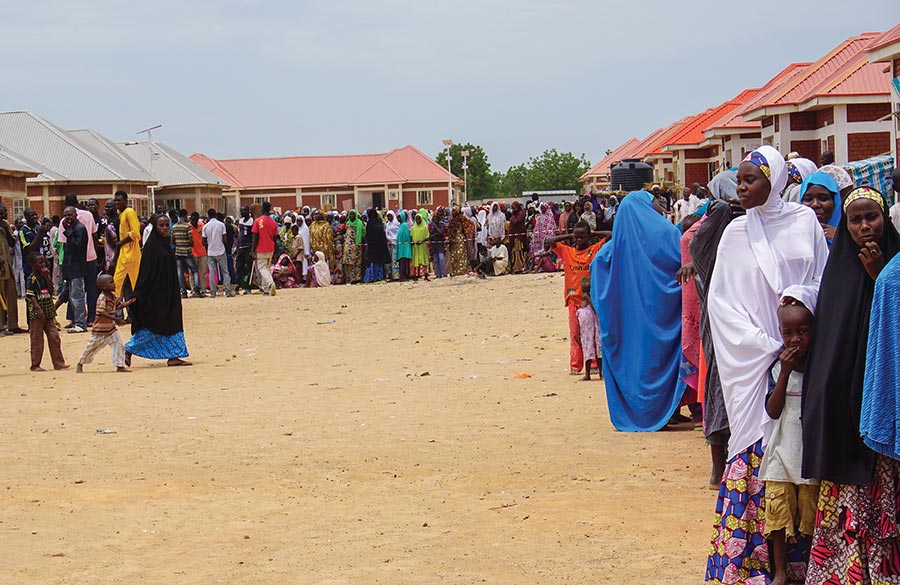
Humanitarian consequences of the violence have been unprecedented and catastrophic. According to a UN report published in November 2016,2 Boko Haram’s violence and military counter-operations displaced 1.8 million people internally and drove an additional 190 000 people into neighbouring countries. Of the combined population of 26 million people in the conflict-affected north-eastern Nigerian states, 14 million people – or 54% of the population – are in need of humanitarian assistance in such areas as health, nutrition, shelter, water and education. Approximately five million people are facing food shortages, and this number is likely to increase in years to come. Borno, Yobe and Adamawa are three of the most severely-affected states in terms of the magnitude of the humanitarian crisis.
Given the long-standing political grievances that gave rise to the current humanitarian and security crisis, an effective response must include long-term government–civil society collaboration in devising a political solution to the root causes of the insurgency. Elements of such a political solution include accountability in the delivery of justice and law enforcement; inclusive governance; a development policy that ensures improved resource access and employment; reformed systems of secular and religious education; and a community-based participatory process of truth-telling, intercommunal reconciliation and trauma healing. While these are all important long-term steps, an immediate task that must be undertaken is to overcome the humanitarian crisis caused by the displacements. With the military gains that the Nigerian security forces recently made in the north-eastern areas that Boko Haram once controlled, the focus of crisis management is now shifting toward the repatriation of displaced people hoping to return to their deeply divided home communities.
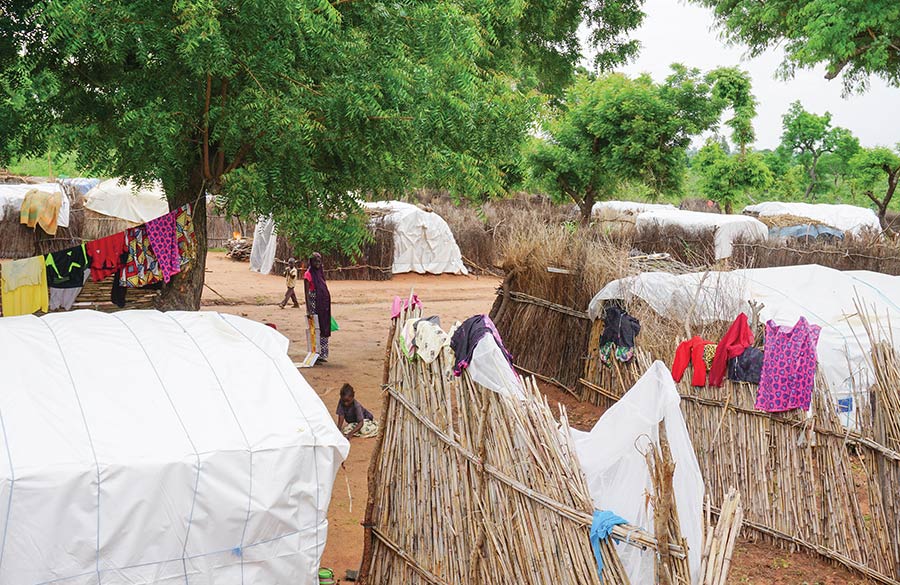
It is against this background that field research was conducted in June–July 2016 in Maiduguri and Yola, the capital city of Adamawa State. Both cities, and their neighbouring towns and villages in which the field research was conducted, were severely affected by the insurgency and displacement. Focusing on the challenges and needs of the internally displaced persons (IDPs), data collection for the research consisted of in-depth interviews and focus-group discussions with both males and females, youth members and leaders of displaced communities, government personnel in charge of official IDP camps, the police mobilised for peacekeeping, and representatives of humanitarian agencies serving the displaced communities. Central findings and recommendations from the research focused on two main questions:
- What forms of humanitarian support and improved self-help do displaced communities need to resolve rising community disputes in their places of refuge and prevent the disputes from escalating into public unrest?
- What forms of humanitarian support and improved self-help do displaced communities need to prepare for repatriation and to rebuild relationships with those whom they believe to be Boko Haram sympathisers and adversaries?
A common thread connecting the two questions is the need for conflict sensitivity – a form of development and humanitarian assistance that purposefully incorporates practitioners’ assessment and awareness of the prevailing context of conflict. More specifically, conflict-sensitive development and humanitarian assistance consists of:
- systematically analysing the context of the conflict in which one’s intervention takes place;
- understanding the interaction between the context and the intervention; and
- acting on the understanding of this interaction in such a well-coordinated manner as to maximise positive impact and minimise negative impact.
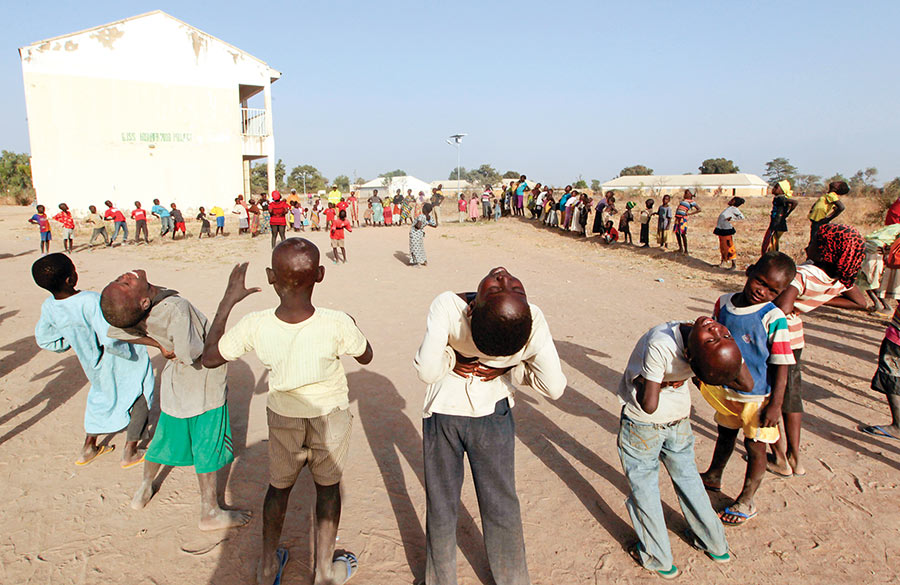
In the context of north-eastern Nigeria’s IDP settlements and their host communities, conflict-sensitive humanitarian support requires sensitivity to the ethnolinguistic, tribal and regional differences that the displaced people have brought from the conflict-affected home regions in which they once lived. Conflict-sensitive support also requires building mutual trust and fairness between the government agencies supporting the IDPs and the IDPs themselves with respect to government action in the provision of shelter, food and other basic needs.
The two sets of recommendations derived from the field research correspond to the two questions that guided the research:
- Enable the IDP communities to expand their conflict-handling capacity.
- Enhance the IDP communities’ readiness to resolve and prevent conflicts that may arise during the course of their repatriation to their home communities.
The remainder of this article elaborates on these two recommendations. The discussion draws on the findings from the field research. It also builds on the practical experience of the author, who worked with Nigerian humanitarian support professionals in the north-eastern region as their conflict resolution trainer.
Expanding IDP Communities’ Conflict-handling Capacity
Across different types of government-supported formal IDP settlements and informal settlements outside the government’s preview, overlapping characteristics of community-based practices in dispute settlement were identified. A clear understanding of these community practices is a prerequisite for making a sound judgement about what the strengths of these practices are, as well as what additional steps the communities will need to take to meet their unprecedented humanitarian crisis. In broad outline, these characteristics of community practices can be summarised as follows:
Precondition for effective dispute settlement:
- There are appointed camp chairmen (in the case of government-supported official camps) and respected IDP community leaders (in the case of informal camps outside the government’s preview). These chairmen and leaders typically had some form of leadership roles in their home communities. They come from mid- to high-level socio-economic status and respected kinship.
Frequently adopted steps to practise dispute settlement:
- Individual conflict parties attempt to resolve their dispute, when the dispute is relatively small and manageable to them.
- In government-supported formal camps, committees set up to serve camp residents’ specific needs such as food and security can intervene to facilitate dispute resolution. When these committees intervene, their collective efforts in dispute resolution supplement or override disputants’ self-guided effort in problem-solving.
- Should the parties (or specialised committees set up in formal camps) fail in dispute resolution, they bring their dispute to their camp chairman and/or IDP community leader. Elders may also be asked to support dispute resolution.
- The camp chairman or IDP community leader listens to all sides of the dispute, either in person or in a group setting, or in some combination of both. The chairman or community leader may consult elders as needed, following local customs.
- The examination of the conflict often involves finding and pointing out a “fault” that one side of the conflict over the other is deemed to have.
- With the support of elders and with their traditional authority, the camp chairman or IDP community leader serves as an arbiter. They often issue a binding resolution to the conflict parties.
- When a fault of one or more parties is identified as a perceived cause of the dispute, the camp chairman or IDP community leader offers guidance, in addition to a reprimand as needed, to the party in question. The goal of their guidance is to support the party’s need to fulfil their responsibility to offer restitution.
- When disputants come from two or more townships and/or villages, or when the issues under inquiry affect multiple communities, elders from each of the communities are invited to offer their own perspectives. Groups of elders will each assume the responsibility for guiding their own communities to carry out agreed-upon actions. These actions are designed to restore intercommunal peace.
- At official camps where the National Emergency Management Agency (NEMA) – a federal government institution in charge of camp management – takes an institutionally mandated role and responsibility for resolving conflicts on a relatively larger scale, a multi-stakeholder forum is organised. Complex and serious conflicts that have escalated into intercommunal violence can also be handled by this forum. Once such a forum is established to resolve an intercommunal dispute, NEMA works with the State Emergency Management Agency (SEMA) – a provincial government institution in charge of camp management – to bring together camp leaders, representing different townships of origin as well as humanitarian agencies serving the camp. The forum seeks to establish a fair and inclusive process in which the conflict parties can air their grievances and have this collective body jointly arrive at a mutually acceptable binding resolution.
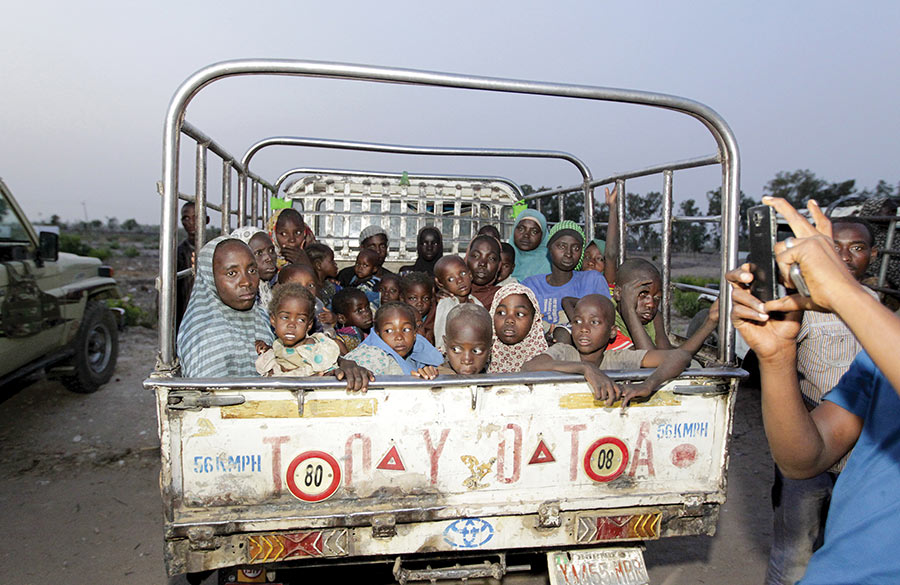
To the extent that these traditional community-based practices, with or without state support, have been used for a long time, it is neither feasible nor desirable to introduce any form of outside interventions that encourage the communities to suddenly depart from their familiar practices in arbitration. However, it must be noted that many of the disputes arising at these IDP camps and in their host communities are unprecedented and unfamiliar to both the IDPs and their host communities. The unprecedented nature of the disputes is illustrated by their devastating experiences of displacement, deprivation, severe collective trauma and ethnic tensions. These devastating experiences have contributed to the rise of highly complex protracted conflicts that the traditional practices of arbitration alone may not be able to handle. Such observations of the communities’ challenges support the need to introduce culturally sensitive ways of capacity-building that enable these communities to handle their disputes more effectively. Given this background, qualified Nigerian and international professionals in humanitarian assistance and peacebuilding should consider providing these communities with capacity-building opportunities in the following three areas:
- Capacity-building for community leaders, both male and female, and elders on how to identify the sources of conflict: Simple techniques for diagnosing conflict – such as asking open-ended questions about why a disputant came to take a position that they took – would be helpful. Careful diagnosis of conflict should help both the arbiters and the disputants to understand more deeply and empathise with the disputants’ human needs and motivations requiring expression and fulfilment. The goal of this diagnostic process is to see alternatives to regular perspectives and judgments about which party is right or wrong and who is to blame. For example, in recent mediation training that the author conducted for Nigerian humanitarian assistance professionals brought together in Maiduguri, the metaphor of an onion – an object used to illustrate a multi-layered reason for a conflict party’s entrenched position – was introduced. The onion metaphor suggests that a third-party facilitator can identify the underlying need and motive of each conflict party’s stated position by asking the party why they came to take the stated position. In this inquiry, the position is compared to the visible surface of an onion. The onion metaphor helps a third party carry out an empathetic, reflective dialogue with each conflict party and uncover the deeper levels of the party’s unarticulated needs and aspirations. Such an incremental process of deepening inquiry resembles the task of carefully peeling away one layer of an onion at a time until the small inner core of the onion is revealed. Post-workshop survey results indicated that the training participants generally appreciated the usefulness of the onion metaphor as a tool for active listening and diagnosis.
- Capacity-building for community leaders and elders on how to generate multiple options for conflict resolution: A simple simulation that involves asking each pair of community members to come up with as many mutually acceptable solutions as possible to a conflict between two people competing for one orange proved helpful.3 In the Maiduguri workshop, Nigerian humanitarian support professionals proposed not only splitting the orange in half and dividing the orange juice, but also planting seeds together to harvest more oranges in the future. The goal of this skill-building exercise is to stimulate creative thinking that transcends the familiar zero-sum (win/lose) mindset that tends to dominate arbitrators’ thinking. While the communities’ capacity to arrive at resolutions through arbitration should be retained as viable and useful, care must also be taken not to suppress disputants’ unfulfilled needs that may exacerbate their frustration and unrest under the current circumstances of humanitarian crisis.
- Capacity-building for community leaders and elders to work on both the advantages and challenges of their familiar practices of arbitration: In this process of capacity-building, arbitration should be contrasted to mediation, as a method of conflict resolution that is more disputant-centred, more participatory, more voluntary and less binding. The goal of this capacity-building process is to enable community leaders and elders to expand their scope of resolution options outside the well-established arbitration procedures with which they are familiar. In the long run, the expansion of their resolution options should enable them to expand their freedom to devise more sustainable ways of serving their communities’ needs and preventing aggressive behaviour and public unrest.
One way of introducing these and other useful skills is to perform an engaging skit on a concrete scenario of conflict with which they are familiar. The skit can introduce the useful skills previously mentioned and help community members prepare for participatory dialogues on the practical application of the skills.
It must be emphasised that an increase in the awareness and capacity of community leaders, elders and members to handle conflicts peacefully and to prevent conflicts from escalating into systematic violence will contribute significantly to their repatriation. One way of motivating them to learn basic skills in the diagnosis and resolution of community-based conflicts is to link these skills explicitly to their deep aspiration to return home. Doing so can also help them fulfil their desire to restore peaceful coexistence in their home communities upon return.
Enabling Returnees to Prevent Conflict and Promote Coexistence
The IDP communities’ expanded capacity to resolve disputes on their own can help rebuild relationships and livelihood upon their return to their home towns and villages. However, given the enormity of the scale and complexity that the repatriation movement in north-eastern Nigeria entails, additional capacity-building aimed specifically at facilitating intercommunal confidence-building and coexistence is needed on a much larger scale. These efforts for capacity-building must increase the returnees’ ability and self-confidence to ensure their security. The efforts must also help restore functional relationships with those whom the returnees suspect to be Boko Haram sympathisers back home. Overall, these efforts are imperative because under the existing circumstances of tension and mistrust, minor disputes can quickly escalate into large-scale violence.
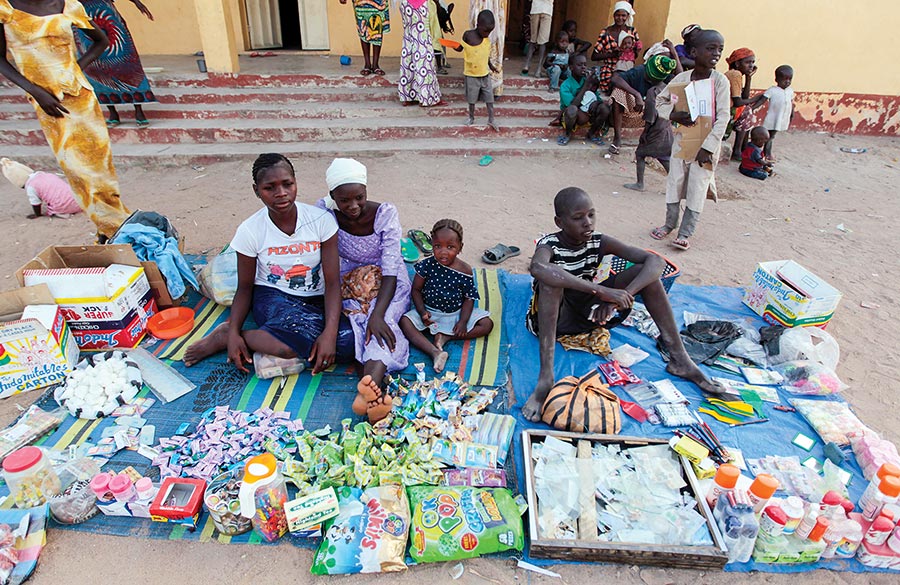
The fragility of relationships between the returnees and their home communities calls for conflict-sensitive repatriation planning and support. In north-eastern Nigeria, the affected communities, involved government agencies and humanitarian support organisations should not only refrain from doing any harm to the social contexts in which repatriation takes place, but must also proactively incorporate the basic principles of conflict prevention and resolution into humanitarian and development assistance to facilitate conflict-sensitive repatriation. An observation of humanitarian activities on the ground, however, suggests that conflict prevention and resolution is either missing or failing to be mainstreamed sufficiently. To fill this gap, the stakeholder communities and organisations must consider sustained, well-funded efforts to build the returnees’ and home communities’ capacities and awareness in the following four interrelated areas:
- Practical reconciliation: Reconciliation is a sustained social process that seeks to realise a closure to revenge while simultaneously promoting healing from trauma and guilt. While the activities required to facilitate reconciliation focus on psychosocial support and relationship-building, it is often useful to tie reconciliation processes systematically to livelihood development. Such an integrated approach to reconciliation and development, when planned and carried out skilfully, can bring divided communities together to generate immediate, tangible benefits and build relationships.4 The existing practices of livelihood support that can be utilised to facilitate practical reconciliation in north-eastern Nigeria include skills-building, mentoring and equipment support for income generation through initiatives, such as sewing, that purposefully bring women from different ethnic and regional communities together. Members’ voluntary consent in participation and risk-taking is required.
- Functional coexistence: Functional coexistence, a concept developed by this author, describes a sustained adversarial relationship between two or more parties – either individuals or groups – who actively refuse to recognise each other as a legitimate partner to deal with, but who still choose not to use physical violence to settle their differences. Experience in many deeply divided societies that underwent genocides and mass killings suggests that the communities affected by such large-scale violence categorically reject both the desirability and practicality of peaceful coexistence. A premature move to promote reconciliation in these contexts can cause deep resentment and further exacerbate existing divisions. Given this background, one may argue that the events which took place across the severely conflict-affected townships and villages in north-eastern Nigeria exhibit the characteristics of a society in need of functional coexistence. Similarly to practical reconciliation, functional coexistence focuses on building pragmatic intergroup relations that can facilitate much-needed practical functions of the groups. These relationships, often devoid of trust or empathy, can be built through coordinated activities such as initiating and restoring intercommunal markets, water points, transportation hubs and livelihood projects. Unlike with activities designed for practical reconciliation, however, reconciliation (meaning closure and healing) is presented to the communities neither as a goal nor as an expectation of the activities. Reconciliation may evolve over time and be welcomed as a consequence.
- Mediative process: A mediative process is defined as a wide spectrum of sustained group-based processes that seek to bring members of divided communities together to meet their shared needs and purposes, which can transcend the underlying reasons for their divisions.5 These social processes may not necessarily look like conventional mediation sessions, which have a distinct beginning and end. Nor are they likely to involve a well-defined set of conflict parties and intermediaries, who typically meet in confidential settings. Unlike mediation sessions, mediative social processes are open to diverse participants who can move in and out freely and interact to build relationships in open public settings. In many of these sustained mediative processes, there is no fixed time frame regarding when the processes formally start or end. Examples of mediative processes introduced in conflict-affected societies include the hosting of interfaith and intercommunal peace festivals, intercommunal schools and intercommunal clinics – all focusing on basic human needs that transcend the politicised causes of division. In the context of Nigeria’s intercommunal tension, the activities of the Muslim-Christian Dialogue Forum in Kaduna – an interfaith peacemaking organisation established in 1995 by two former enemies, Pastor James Wuye and Imam Muhammed Ashafa – cogently illustrate effective mediative processes.6 Noteworthy achievements in the two leaders’ efforts to develop mediative initiatives include the consensus built among some 20 senior religious leaders in Kaduna State to adopt the Kaduna Peace Declaration on 22 August 2003. This declaration was significant, because it established a sustained platform of Christian-Muslim partnership aimed at preventing religiously inspired violence and promoting intercommunal peace. Consistent with what the interfaith initiatives in Kaduna demonstrated, findings from the field research in north-eastern Nigeria suggest that the devastated communities to which the IDPs in Maiduguri, Yola and their neighbouring towns hope to return will need mediative processes more than conventional mediation. The use of mediation, like traditional arbitration, should not be excluded, however, and it must be kept intact as a reliable means of problem-solving. Conceptually, a mediative process offers an overarching framework of thinking and practice that can support and incorporate functional coexistence and practical reconciliation.
- Collective reparation: Reparation refers to compensation for a loss, injury and/or harm. Developed by civil society initiatives in such contexts as post-genocide Rwanda, collective reparation refers to an integrated process of mutual help, livelihood support and collective healing through which perpetrators work with willing others – including victims and bystanders of mass violence – to pool their personal resources. The collective resources are then given to the most vulnerable victims in the community through a well-institutionalised participatory system of decision-making.7 In some Rwandan communities, reparation is offered in the form of labour as much as in financial and material form to accommodate what is practical and mutually acceptable to the communities. While the Rwanda example is relatively modest, it nevertheless suggests a useful model of community-based reparation, livelihood support and reconciliation that north-eastern Nigeria’s IDP communities can choose to implement upon repatriation. The indication of “collective” in this context, however, should not be taken to downplay the centrality of a more formal state-led reparation process, which would most likely need to build on a Nigerian adaptation of a truth and reconciliation process.
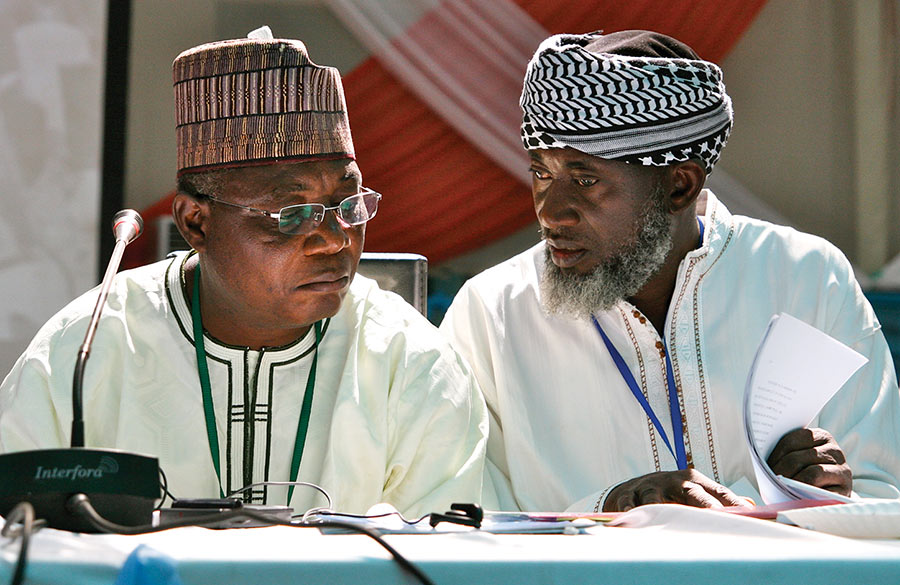
The four examples of community-based practice described – practical reconciliation, functional coexistence, mediative processes and collective reparation – suggest practical ways in which social conditions conducive to IDPs’ peaceful repatriation can be developed. These activities also seek to enable the IDPs to rebuild relationships and livelihoods, either in their home communities or in new communities in which they may choose to settle. Either way, to make their transition peaceful and successfully prevent intercommunal violence, effective coordination between the IDPs, their host and home communities, law enforcement and security forces, civilian government institutions, humanitarian agencies and other stakeholders involved, is essential.
Conclusion
Based on the field research conducted in north-eastern Nigeria, this article explored concrete steps to expand the capacity of IDPs and conflict-affected communities to prevent and resolve conflicts. It also explored practical means by which to enable IDPs to return home peacefully and fulfil their basic needs for livelihood, security and reconciliation. The overarching theme of the article was conflict sensitivity – a form of humanitarian and development practice that utilises conflict assessment to minimise harm and maximise positive impact on the social context of intervention.
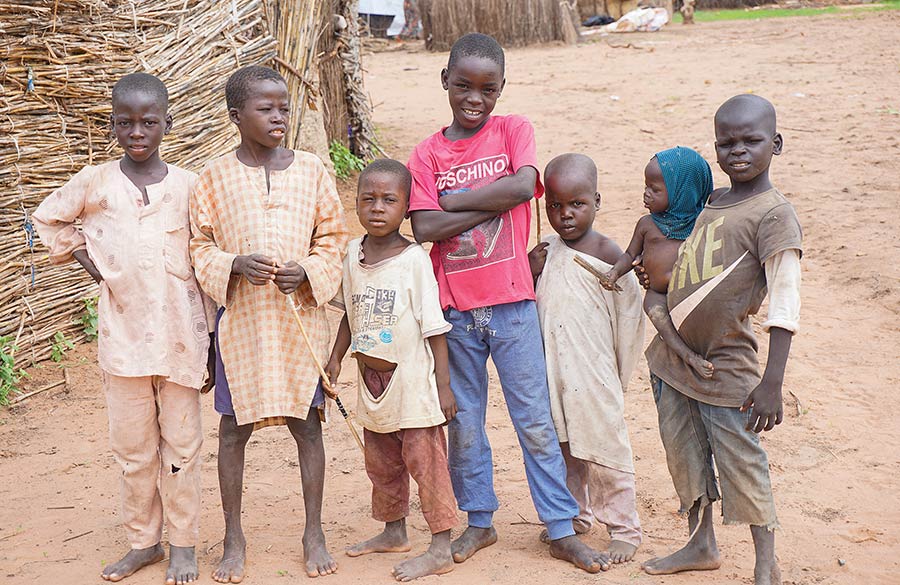
An essential requirement for conflict-sensitive repatriation and development that the interviewees in this study highlighted is the communities’ trust in the provincial and federal governments’ commitment to providing security and resource support. The widespread perception and discontent among the IDPs and conflict-affected communities about the authorities’ illicit activities in diverting food and other humanitarian supplies from IDP camps are severely undermining the authorities’ capacity to facilitate repatriation. To overcome this long-standing challenge, ethical and visionary political leadership is urgently needed. Immediate practical steps for government authorities to regain public confidence include making a firm public commitment to upholding humanitarian principles to serve conflict-affected communities in dire need of assistance.
Endnotes
- International Crisis Group (2014) ‘Curbing Violence in Nigeria (II): The Boko Haram Insurgency’. Africa Report, 216, p. 14; Available at: <https://www.ecoi.net/file_upload/1226_1396951718_216-curbing-violence-in-nigeria-ii-the-boko-haram-insurgency.pdf>
- United Nations Office for the Coordination of Humanitarian Affairs (2016) ‘2017 Humanitarian Needs Overview: Nigeria’, Available at: <http://reliefweb.int/sites/reliefweb.int/files/resources/ocha_nga_2017_hno_13012017.pdf> [Accessed 28 February 2017].
- Galtung, Johan (2004) Transcend and Transform. Boulder: Paradigm Publishers, pp. 4–5.
- Arai, Tatsushi (2012) ‘Development Sensitivity for Reconciliation: Lessons from Rwanda’. Conflict Trends, 2012 (4), p. 46, Available at: <https://www.files.ethz.ch/isn/165602/ACCORD-conflict-trends-2012-4.pdf>.
- The term “mediative” is adopted from: Lederach, John Paul (2005) The Moral Imagination. Oxford: Oxford University Press, pp. 94–97.
- The Imam and the Pastor, a YouTube video featuring Pastor James Wuye and Imam Muhammad Ashafa, is available at: <https://www.youtube.com/watch?v=kFh85K4NFv0> Another useful source is: Wuye, James Movel and Ashafa, Muhammad Nurayn (1999) The Pastor and the Imam: Responding to Conflict. Lagos: Ibrash Publications.
- See Arai, Tatsushi (2012) op. cit., p. 48.

